Birding Northeast Puerto Rico, near El Yunque National Forest
More than 350 species of birds have been recorded on Puerto Rico and the nearby Virgin Islands, including some 100 nesting species. Nearly 20 of these are endemic to Puerto Rico. In addition, the resident bird population swells during the height of the tourist season, when warblers and other North American birds head south for their winter break.
Table of Contents
Puerto Rico, one of the Caribbean’s Greater Antilles Islands
The Treaty of Paris, signed in December, 1898, ended the Spanish-American War and transferred Puerto Rico, together with Guam and the Philippines, to the U.S. from Spain. The island became a U.S. Commonwealth in 1951, and today’s visitors to Puerto Rico find it difficult to distinguish it from any other state. English and Spanish are equally official languages, and Americans find many familiarities, such as the U.S. Post Office and the U.S.D.A., which manages El Yunque, the only tropical rainforest in the U.S.’s National Forest System.
The Caribbean’s Greater Antilles consists of four islands, Cuba, Hispaniola (home of the Dominican Republic and Haiti), Jamaica and Puerto Rico. Puerto Rico is the smallest of these islands, about 100 miles in length by some 35 miles wide. The climate is tropical, with an average annual temperature in the 80s. The topography ranges from sea level to nearly 4,400 feet, and is characterized by beaches, estuaries, agricultural land, rainforests and mountains. In other words, an ideal habitat for birds.
Birding the Northeast Quadrant of Puerto Rico
Along with the topography, climatic conditions vary across the island. For birders, interesting species can be found anywhere on the island, but the primary birding destination should be the northeast, home of El Yunque, the Caribbean National Forest. El Yunque is a tropical rainforest consisting of 28,000 acres of trees, trails and waterfalls, and is a haven for birds, plants and wildlife. At least 50 bird species can be found here, including endemics such as the Puerto Rican Lizard Cuckoo, Puerto Rican Spindalis, Puerto Rican Flycatcher and the Puerto Rican Tody. Nearby areas to the east of El Yunque offer additional birding.
Several areas along highway 3, east of the highway 191 intersection to El Yunque, offer accessible opportunities to bird. There is a wide pull-out area just east of the highway 191 intersection, on the north (beach) side of highway 3, near the golf course. Look for Bronze Mannikin, Gray Kingbird and Bananaquit here. In Luquillo, follow Calle 1 to its end, where there is a path to the river beach, and where Mangrove Cuckoo, Green Heron, various egrets and Common Moorhen can be found. Back on highway 3, continue east one-half kilometer past the highway 193 Luquillo exit, and turn right (south) on the road at the sign to Paisaje del Rio, a gated area. Flower hedges along the road before the gated area are a good place to find Green-throated Carib hummingbirds.
Further east, exit highway 3 at the sign to Boqueron/Pitahaya, and cross under the freeway to the north side. A short drive west takes you to a dirt road on the right side, with a large DRNA sign for Corredor Ecologico de Noreste. The road may be difficult after a rain, but you can park outside the gate and walk. Grassy fields on the left are good habitat for Black-faced Grassquit and orange-cheeked Waxbill.
Birding Culebra Island
Culebra Island, home of one of the Caribbean’s most beautiful beaches, Playa Flamenco, can be reached by ferry from Fajardo. Probably the easiest way to get to the ferry is to pass the exit to Fajardo from highway 3, and exit instead at highway 194. Follow 194 back (north) into Fajardo to the intersection with a sign to the ferry. The ferry to Culebra is inexpensive (only two dollars round trip for seniors), and takes 90 minutes to make the crossing. The first ferry from Fajardo leaves at 9:00 am, which provides enough time to see Playa Flamenco, have lunch, bird the trail to the snorkeling beach and return on the last ferry at 5:00 pm.
Once you arrive on Culebra, take a van taxi to Flamenco beach for five dollars round trip. The driver will return to pick you up at Flamenco beach at 4:00 pm. Kiosks provide a wide choice of food and drink at the beach, and snorkel equipment may be rented there as well. The best birding in this area can be found along a trail that begins at the back of the parking lot, leading up and over the hill down to an excellent snorkeling area. Allow an hour each way for the walk, including time to bird. Smooth-billed Ani, Northern Mockingbird, Zenaida Dove and Orange Bishop can be found on the trail, and both Green-throated Carib and Antillean Crested Hummingbirds are abundant among flowering plants near the top of the hill.
Birding Northeastern Puerto Rico
Birders with limited time on Puerto Rico should target El Yunque national forest first, but should try to spend some time in nearby areas, as well. A day on Culebra Island is also worthwhile, and offers the added incentives of beautiful Playa Flamenco and good snorkeling.

